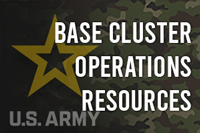Training Focus Area - Establish Unit Area
-
ATP 4-90: Brigade Support Battalion - This manual provides a descriptive doctrinal overview of brigade support area and describes the fundamentals, operations, and considerations for site selection, occupation, establishment, priorities of work, and layout of the support area.
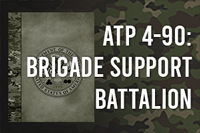
-
18-10: Sustainment in Decisive Action Operations - This handbook provides sustainment observations, insights and lessons learned at the National Training Center (NTC). The handbook provides prescriptive tactics, techniques, procedures on how to task organize the battalion for occupation, how to occupy the brigade support area using TTPs such as the circle or clock method, and how to establish the BSA layout configuration for effective sustainment operations. Note: Access requires CAC credentials.
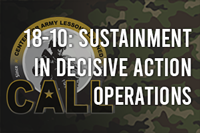 For more lessons learned and the most up-to-date content, visit the CALL SharePoint site. Note: Access requires CAC credentials and site registration by CALL team.
For more lessons learned and the most up-to-date content, visit the CALL SharePoint site. Note: Access requires CAC credentials and site registration by CALL team. -
ATP 6-0.5: Command Post Organization and Operation - This manual expands on command post (CP) tactics and procedures found in FM 6-0. This publication provides considerations for organizing a headquarters into CPs and techniques for employing and conducting CP operations. The material in this publication provides a framework for units to develop and refine their standard operating procedures (SOPs) for CP operations.
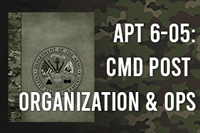
-
ATP 3-21.20: Infantry Battalion - This manual provides an in depth doctrinal basis for the occupation of an assembly area. It describes the fundamentals of quartering party operations, and provides an illustration of an assembly area to deepen understanding and comprehension.
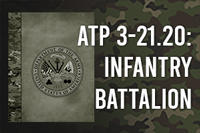
-
Integrating the Maneuver Enhancement Brigade (MEB) - The MEB mission is to provide mission command for a tailored force that conducts support area operations by employing assigned or attached capabilities (CALL 25-909, Feb 2025). Note: Access requires CAC credentials.
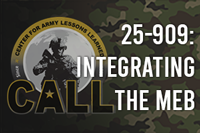 For more lessons learned and the most up-to-date content, visit the CALL SharePoint site. Note: Access requires CAC credentials and site registration by CALL team.
For more lessons learned and the most up-to-date content, visit the CALL SharePoint site. Note: Access requires CAC credentials and site registration by CALL team.


